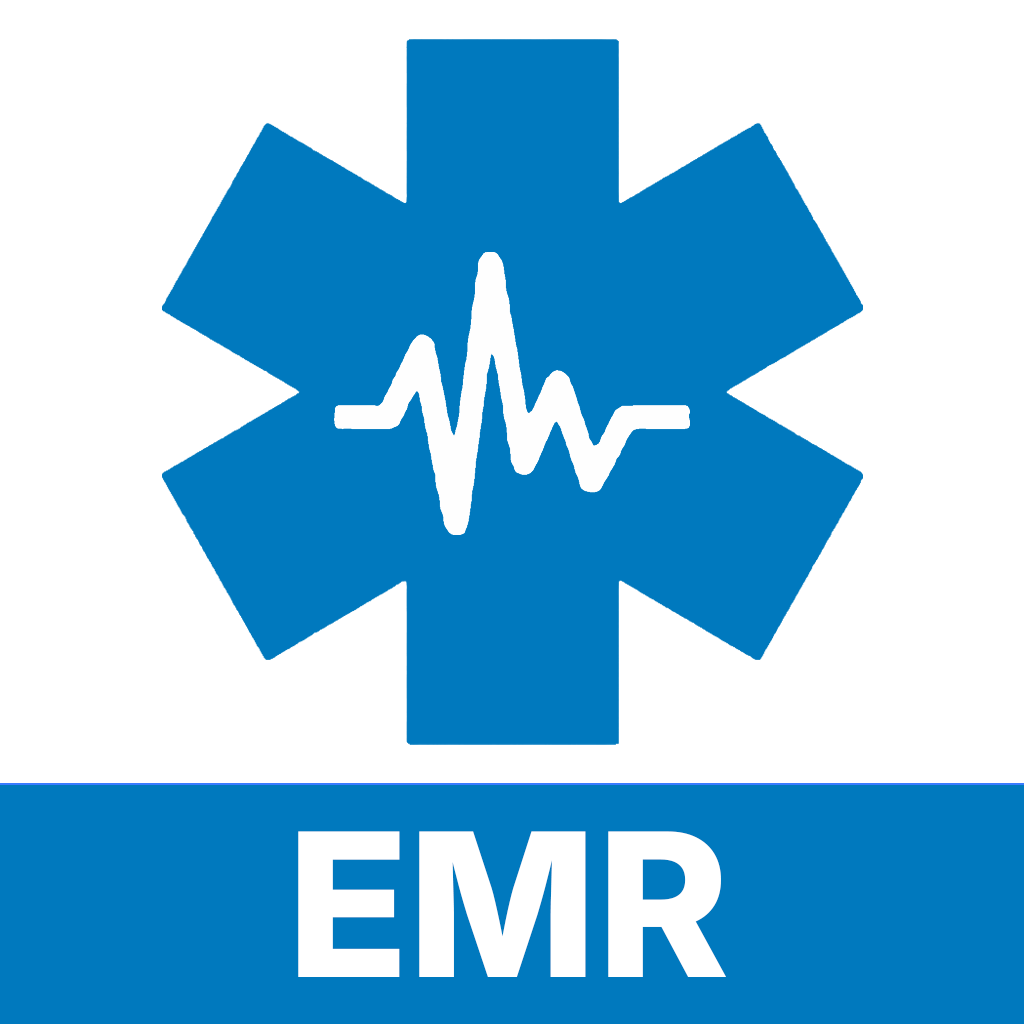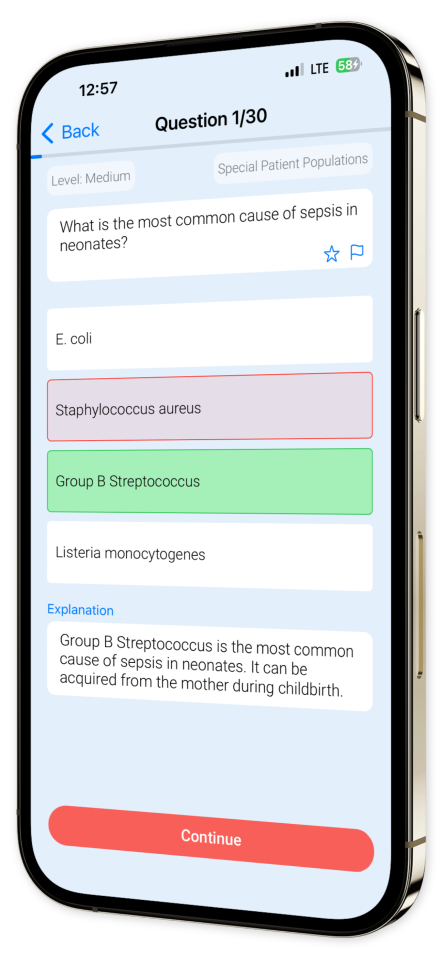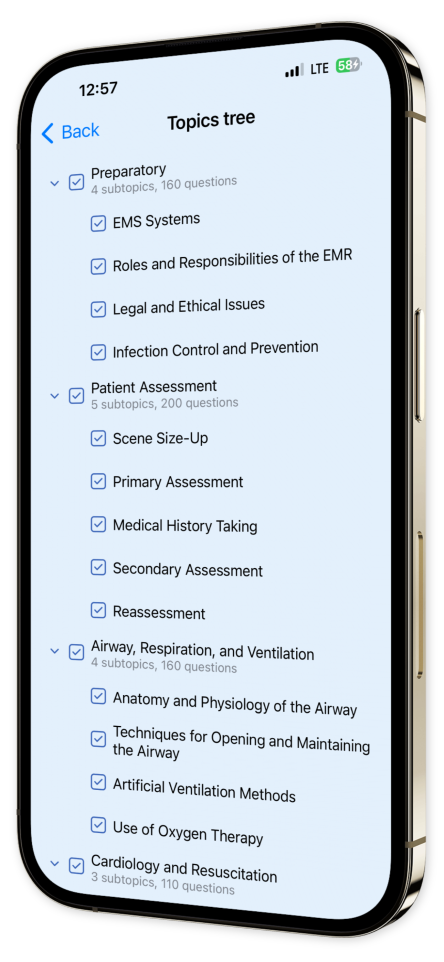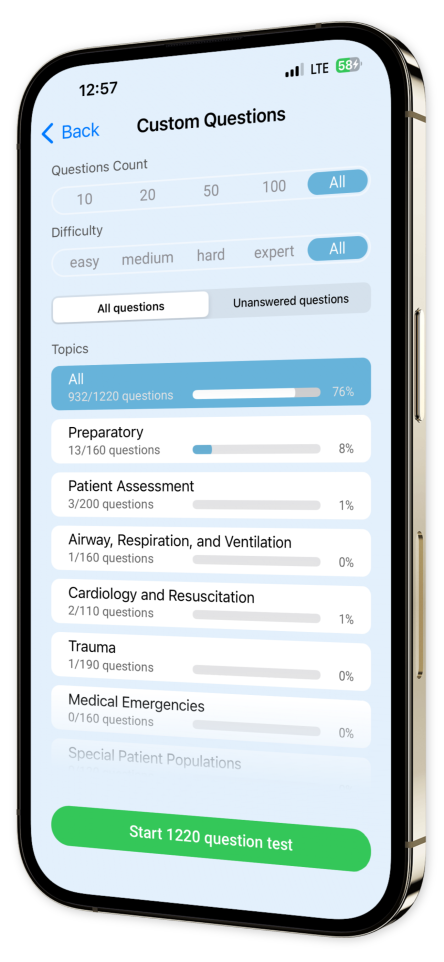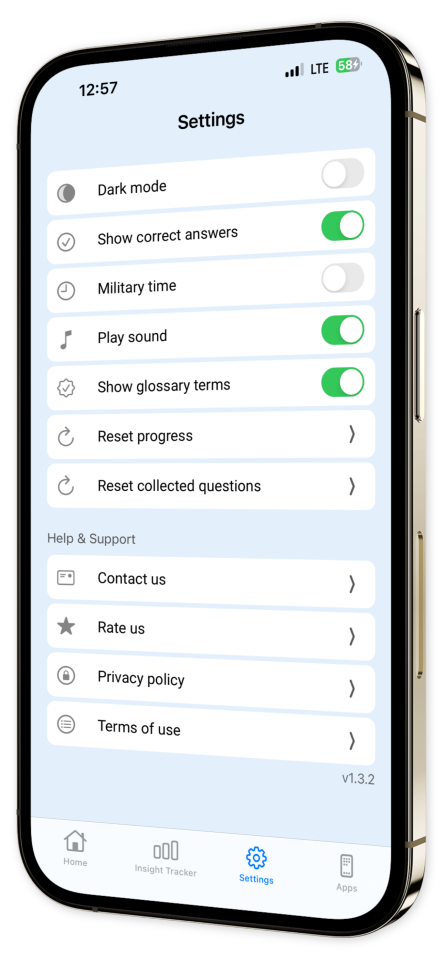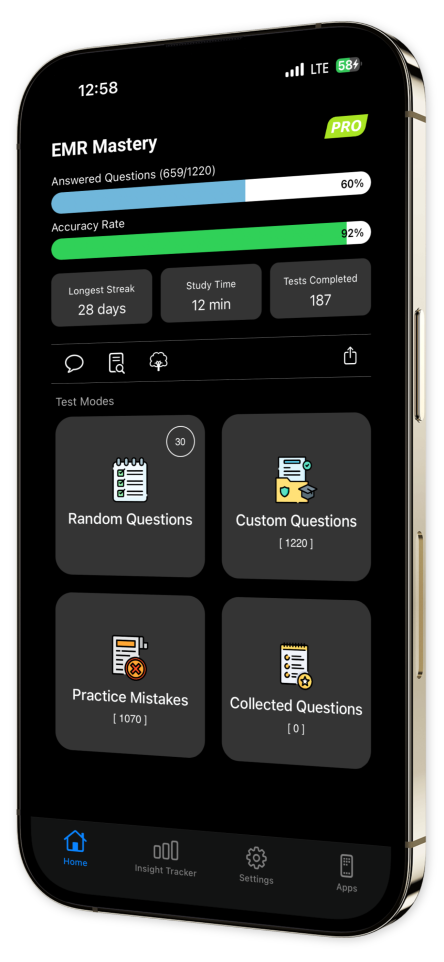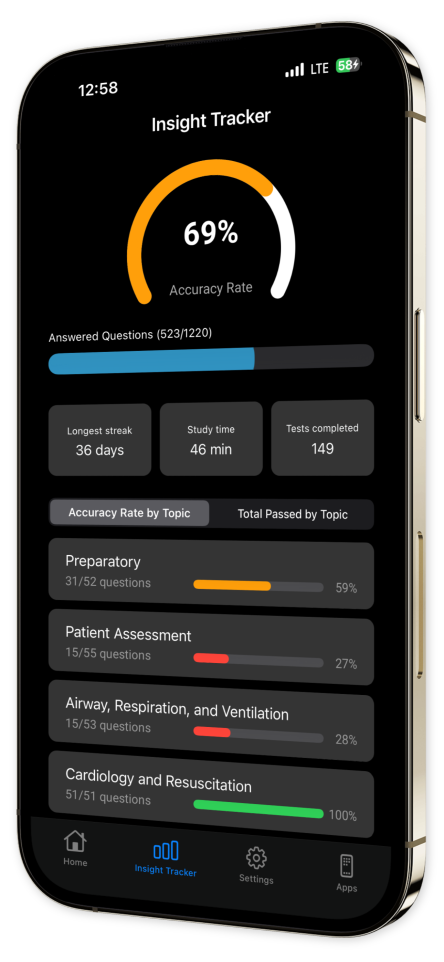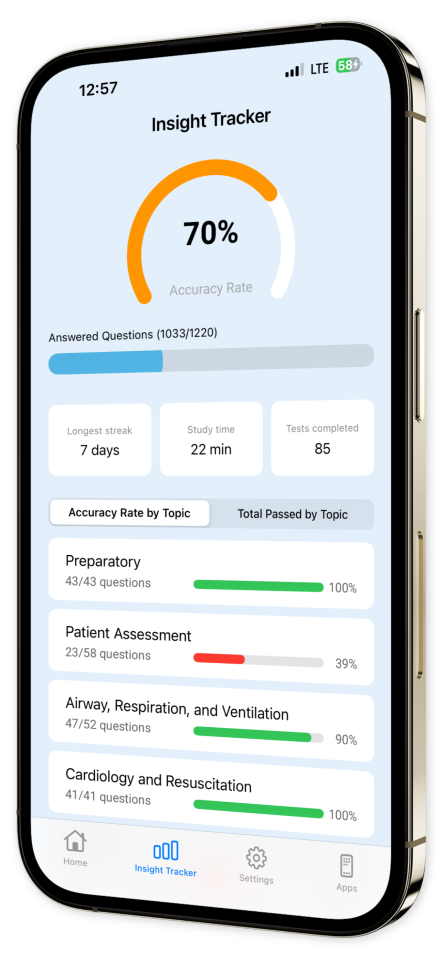
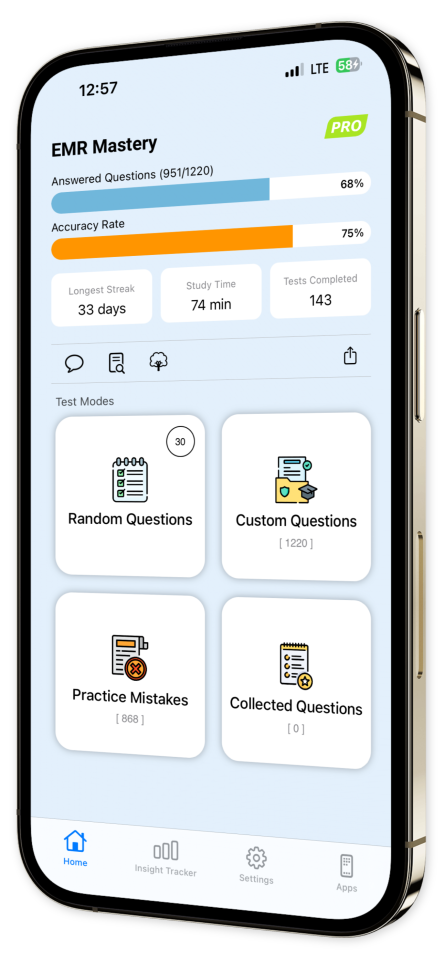
EMR Mastery iOS and Android App
Achieve Excellence in Your EMR Certification with EMR Mastery!
Get fully prepared for your Emergency Medical Responder (EMR) certification with EMR Mastery—the go-to app for first responders who want confident skills, clear judgment, and exam-day success. Whether you’re starting your EMR journey or refreshing before recertification, EMR Mastery helps you lock in the essentials that matter most in the field.
Immerse yourself in realistic, exam-focused questions with in-depth explanations that make tough topics easy—patient assessment, airway & ventilation, CPR/AED, medical & trauma emergencies, bleeding control, splinting, lifting & moving, operations, and more. Advanced analytics spotlight exactly where to improve so you can study smarter, not longer.
Join thousands of first responders leveling up with EMR Mastery. Build rock-solid fundamentals, boost your confidence, and be ready to lead when seconds count. Download now and take the first step toward true EMR mastery today!
Content Overview
Explore a variety of topics covered in the app.
Example questions
Let's look at some sample questions
What is the primary function of a dispatch center in an EMS system?
Transport patientsProvide medical careCoordinate response to emergenciesManage hospital admissions
The primary function of a dispatch center in an EMS system is to coordinate the response to emergencies.
What is the first step in a primary assessment?
Check for responsivenessCheck for breathingCheck for pulseCheck for injuries
The first step in a primary assessment is to check for responsiveness. This involves checking if the patient is conscious and responsive to stimuli.
Which of the following is not part of a patient's social history?
Smoking HabitsDietPast SurgeriesAlcohol Consumption
Past Surgeries is not part of a patient's social history. It is part of the patient's past medical history.
Why is it important to ask about a patient's occupational history?
To determine the patient's income levelTo assess potential exposure to occupational hazards that could impact healthTo understand the patient's daily routineTo assess the patient's level of physical activity at work
Understanding a patient's occupational history can help assess potential exposure to occupational hazards that could impact their health.
Which device delivers a high concentration of oxygen and is often used in severe cases of respiratory distress?
Nasal cannulaNon-rebreather maskVenturi maskSimple mask
A non-rebreather mask delivers a high concentration of oxygen and is often used in severe cases of respiratory distress. It allows for the delivery of up to 90% oxygen.
What is the antidote for cyanide poisoning?
NaloxoneFlumazenilHydroxocobalaminAcetylcysteine
Hydroxocobalamin is an antidote for cyanide poisoning. It works by binding to cyanide to form cyanocobalamin, which can then be excreted in urine.
What is the first step in treating a patient with hypothermia?
Warm the patient's extremitiesAdminister IV fluidsPerform CPRRestore normal body temperature
The first step in treating hypothermia is to restore normal body temperature. Warming the extremities or administering IV fluids can be part of the treatment, but they are not the first step.
Which age group is most susceptible to febrile seizures?
InfantsToddlersPreschoolersSchool-aged children
Toddlers, specifically between the ages of 6 months to 5 years, are most susceptible to febrile seizures. These are seizures that occur in association with a fever.
What is the most common form of dementia in the elderly?
Vascular dementiaLewy body dementiaFrontotemporal dementiaAlzheimer's Disease
Alzheimer's Disease is the most common form of dementia in the elderly. It accounts for an estimated 60 to 80 percent of cases.
What is the purpose of the Logistics Section within the ICS?
To handle financial and administrative aspects of the incidentTo develop strategies and tactics to achieve incident objectivesTo provide resources and needed services to support achievement of the incident objectivesTo document and track resources assigned to the incident
The Logistics Section is responsible for providing facilities, services, and materials in support of the incident.
